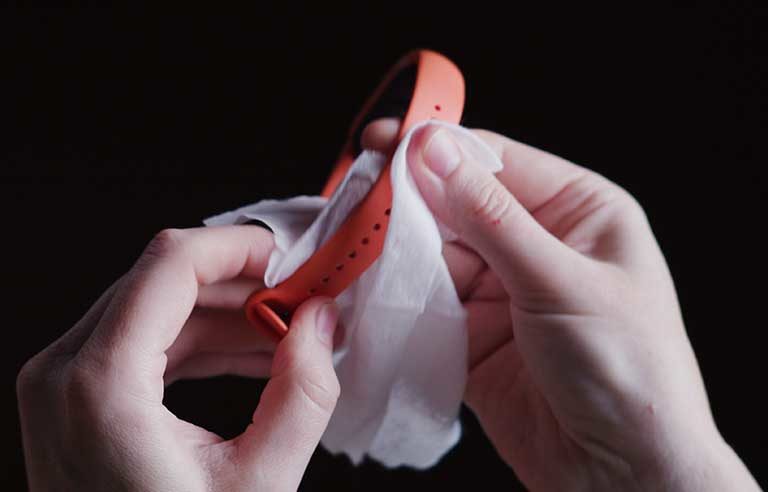Your smartwatch wristband may be a hotbed for harmful bacteria

Photo: invizbk/iStockphoto
Common wristbands – like the one on your fitness tracker or watch – can be breeding grounds for bacteria such as E. coli and Staphylococcus, researchers at Florida Atlantic University say.
They tested the wristbands – made of plastic, rubber, cloth, leather and metal – of 20 active participants to see if any link exists between the material and the prevalence of bacteria.
All but one of the wristbands were contaminated with bacteria. Staphylococcus spp bacteria – a common cause of urinary tract infections – were abundant on 17 of the wristbands. E. coli was widely found on 12 of them. The bacterium can lead to infections that cause stomach pain, diarrhea and, in severe cases, kidney failure.
Texture and activity levels were predictors of bacteria load: Those made of rubber or plastic and those that belonged to regular gymgoers had higher bacterial counts.
The researchers also tested the effectiveness of three disinfection methods: a common disinfectant spray, 70% ethanol and apple cider vinegar. All three reduced viable bacterial counts on all of the wristbands to zero colony-forming units per milliliter within 30 seconds, except plastic. To kill all bacteria on every wristband type, an exposure time of two minutes was needed, according to a press release.
Which materials harbored the least amount of bacteria? Gold and silver, the researchers say.
The study was published online in the journal Advances in Infectious Diseases.
Post a comment to this article
Safety+Health welcomes comments that promote respectful dialogue. Please stay on topic. Comments that contain personal attacks, profanity or abusive language – or those aggressively promoting products or services – will be removed. We reserve the right to determine which comments violate our comment policy. (Anonymous comments are welcome; merely skip the “name” field in the comment box. An email address is required but will not be included with your comment.)
